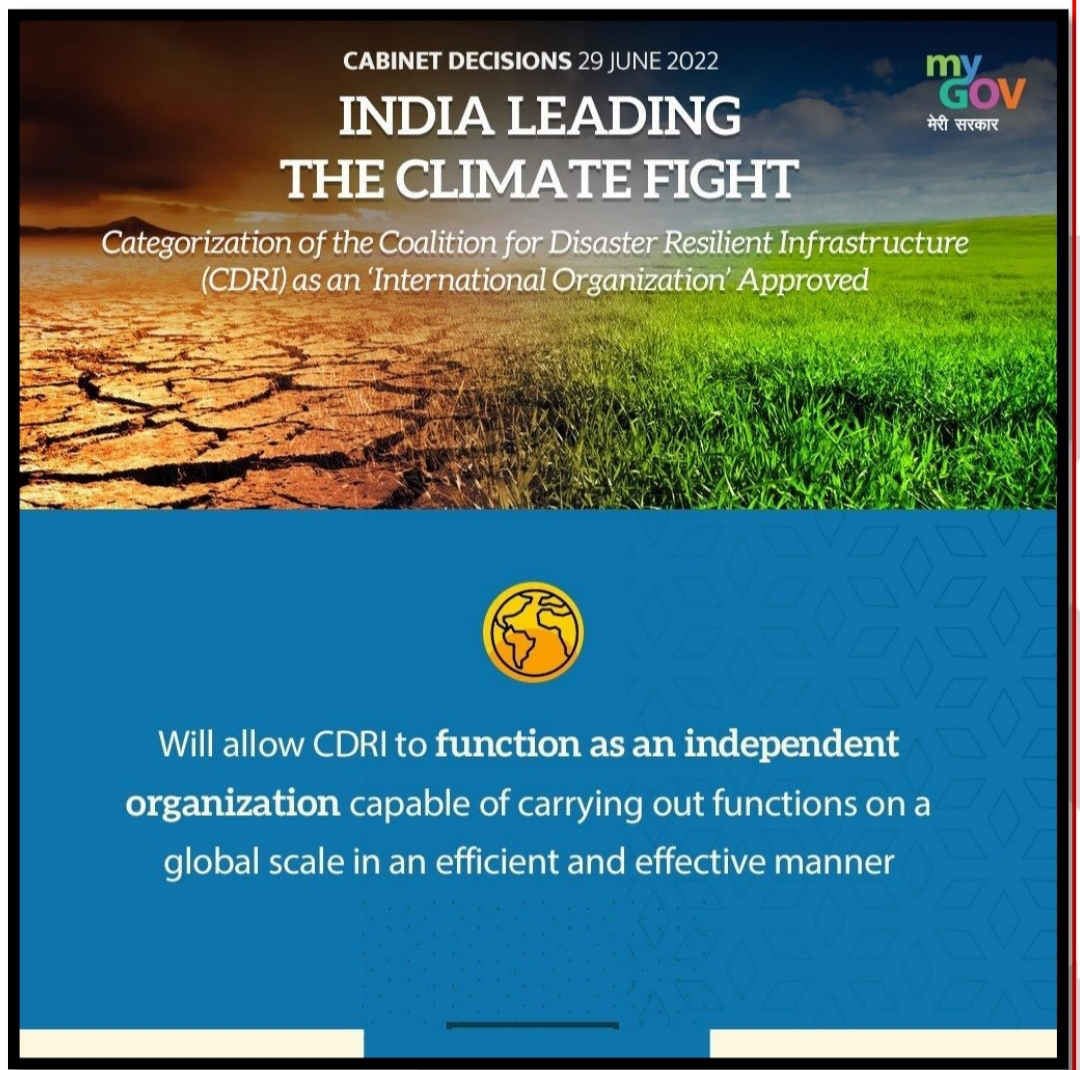Union Cabinet approves to categorize Coalition for Disaster Resilient Infrastructure as 'International Organization'
Recently the Union Cabinet has approved to categorize the Coalition for Disaster Resilient Infrastructure (CDRI) as an 'International Organization'.
It also approved the signing of the Headquarters Agreement and has been granted the exemptions, immunities and privileges envisaged by the United Nations (Privileges and Immunities) Act, 1947, which means that the property of the member and property shall be is also situated elsewhere and whoever has shall be exempted from all legal process, except in a special case which has expressly his defense exempted.
▪️ Coalition for Disaster Resilient Infrastructure (CDRI)
CDRI is a global partnership of national governments, United Nations agencies and programs, multilateral development banks and financial systems, the private sector, academic and research institutions. It aims to increase the resilience of infrastructure systems to climate and disaster risks, thereby ensuring sustainable development.
It was launched in 2019 at the United Nations Climate Action Summit in New York. This is the second major global initiative of the Government of India after the International Solar Alliance; it showcases India's leadership on climate change and disaster resilient issues.
▪️ Members
Since its inception 31 countries, 6 international organizations and 2 private sector organizations have joined CDRI as members. The 06 international organizations include Asian Development Bank (ADB), World Bank Group, United Nations Development Program (UNDP), United Nations Office for Disaster Risk Reduction (UNDRR), European Union, European Investment Bank.
Two private sector organizations include the Private Sector Coalition for Disaster Resilience and the Coalition for Resilient Investment in Climate Change. CDRI has steadily increased its membership by attracting a diverse range of economically advanced, developing and vulnerable countries to climate change and disasters.


